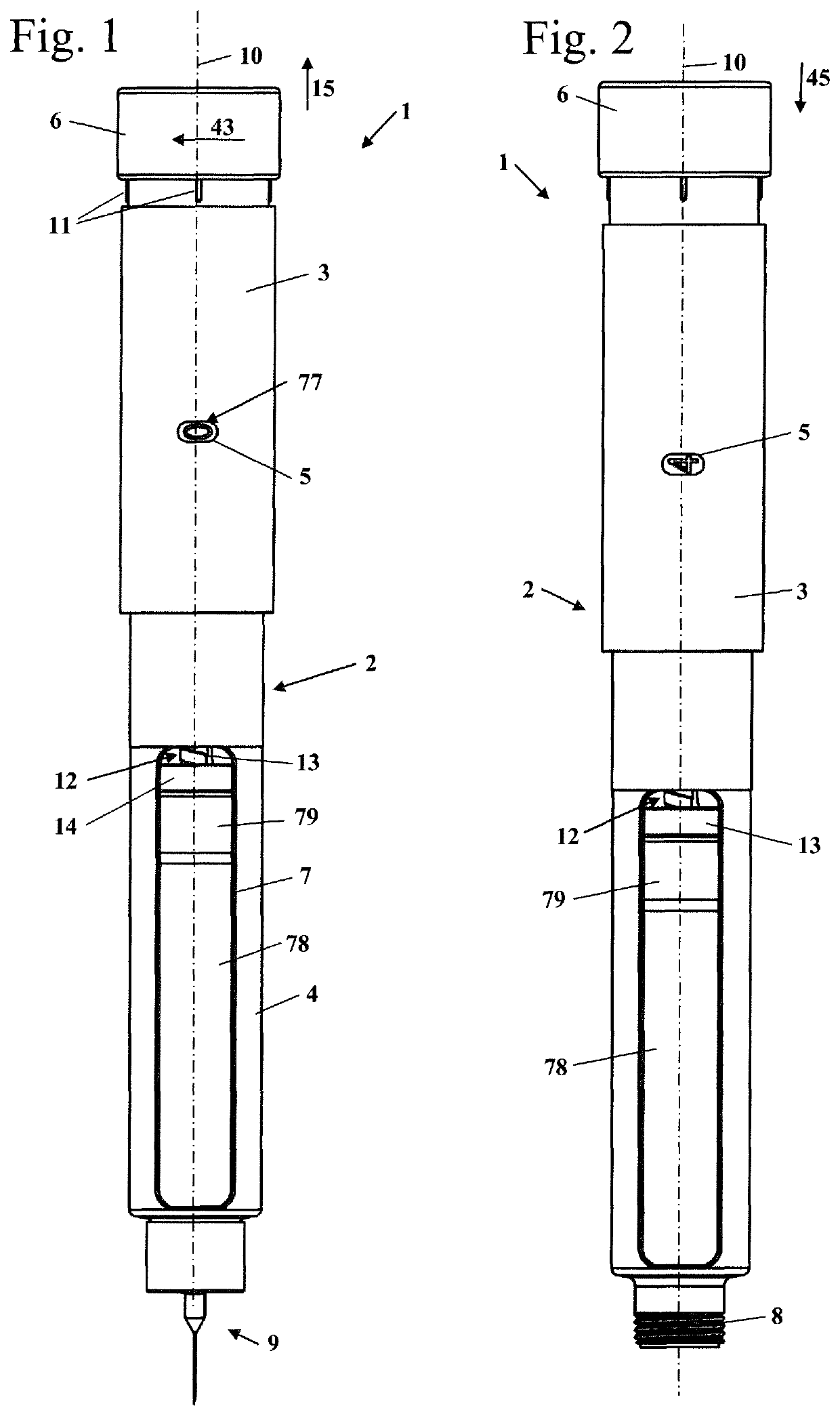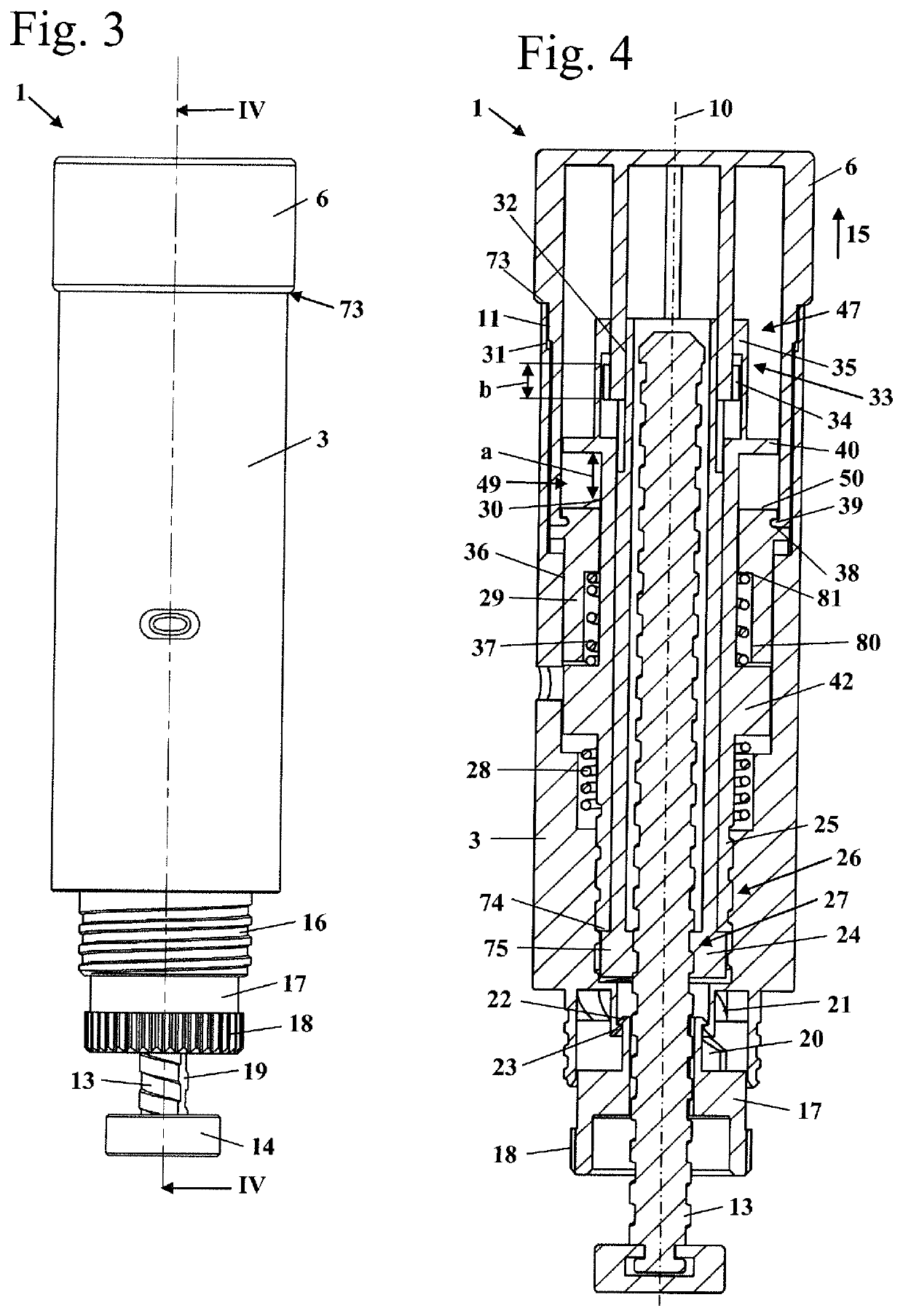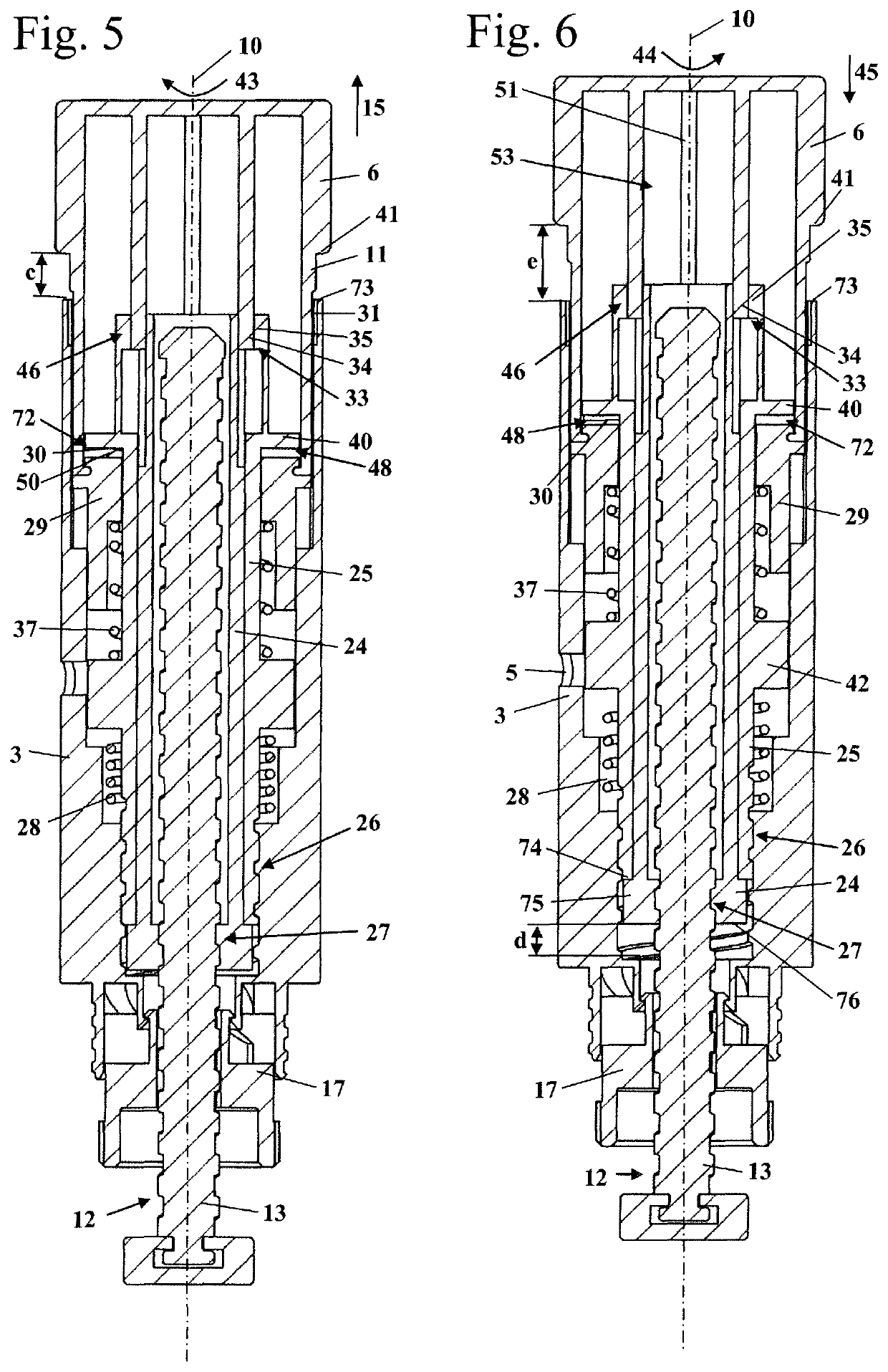Injection device
a technology of injection device and syringe, which is applied in the direction of medical syringe, ampoule syringe, intravenous device, etc., can solve the problem of significant increase in the number of latching positions which has to be overcom
- Summary
- Abstract
- Description
- Claims
- Application Information
AI Technical Summary
Benefits of technology
Problems solved by technology
Method used
Image
Examples
Embodiment Construction
[0044]An injection device 1 which serves for setting an envisaged amount of injection fluid and for pressing the latter out of a cartridge held in the injection device 1 is shown in FIGS. 1 and 2. The injection device 1 has a housing 2 which includes an upper housing part 3 and a holder 4 which is disposed on the upper housing part 3. The cartridge, which includes an advantageously transparent container 78 having injection fluid, and a plug 79 which is disposed in the container 78 and is advantageously visible from the outside, is disposed in the holder 4. The holder 4 in the embodiment has two viewing windows 7 which are disposed so as to be mutually opposite and through which the operator sees how much injection fluid is still contained in the container 78. A dosing piston 12 of the injection device 1 bears on the plug 79. The dosing piston 12 has a piston rod 13, a piston disk 14 being held thereon. The piston disk 14 of the dosing piston 12 bears on the plug 79 of the container ...
PUM
 Login to View More
Login to View More Abstract
Description
Claims
Application Information
 Login to View More
Login to View More - R&D
- Intellectual Property
- Life Sciences
- Materials
- Tech Scout
- Unparalleled Data Quality
- Higher Quality Content
- 60% Fewer Hallucinations
Browse by: Latest US Patents, China's latest patents, Technical Efficacy Thesaurus, Application Domain, Technology Topic, Popular Technical Reports.
© 2025 PatSnap. All rights reserved.Legal|Privacy policy|Modern Slavery Act Transparency Statement|Sitemap|About US| Contact US: help@patsnap.com



